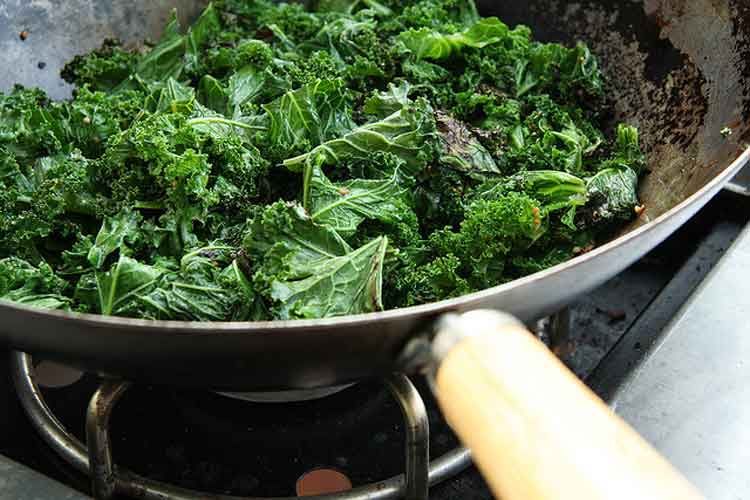By Tori Thistlethwaite (Contributor) – Email
Print Edition: October 29, 2014

If you are into healthy eating (and even if you’re not), you have probably heard a lot about kale and how it’s a miracle food. You might have even started eating it because someone told you it was healthy, but you never really looked further into why it is called a superfood. So let’s take a look — what are the health benefits, and why should we eat kale rather than plain old iceberg lettuce?
Kale is a descendant of wild cabbage, and is a relative of cauliflower, broccoli, and Brussels sprouts, all of which garner attention due to their sulfur-containing phytonutrients. The recommendation for consumption is one to one-and-a-half cups of steamed kale (steaming enhances the value of the nutrients, but it’s not necessary) two or three times a week in order to receive optimal health benefits.
The website MindBodyGreen.com lists 10 health benefits of eating kale, some of which aren’t important, such as how the vegetable is low in calories and has zero fat — neither of which makes it remarkable — but the points which detail the high iron and vitamin K, A, C content, the amount of cancer-preventing antioxidants, and high level of calcium (kale has more than milk!) do make this food something to consider adding to your diet.
WHFoods.org goes to great lengths to detail the amazing benefits of kale, and provides an in-depth analysis of the different nutrients and how they affect several areas in your body. The website provides an explanation for how this simple stalk and leaf has become a super food: “Kale’s nutrient richness stands out in three particular areas: (1) antioxidant nutrients, (2) anti-inflammatory nutrients, and (3) anti-cancer nutrients in the form of glucosinolates.” Furthermore, researchers have found links between the consumption of kale and the prevention of five types of cancer: bladder, breast, colon, ovarian, and prostate.
There are many other benefits that come from eating kale, but both of these sites and many others provide great information, and cover the criticisms of kale as well as the benefits. One I would like to note is the level of pesticide residue found in non-organic kale. In 2013, the Environmental Working Group brought attention to the levels of contamination in kale, which ranked number three on their list along with other leafy greens. The USDA found 55 different pesticides in kale, and according to WallStCheatSheet.com, “9 are known or probable carcinogens, 27 are suspected hormone disruptors, 10 are neurotoxins, 10 are developmental or reproductive toxins.” Many popular fruits and vegetables are on this list, including apples, strawberries, and cucumbers, so it is not a cause for high alarm, but it is important to know what you are consuming. When the pesticide count is so high, do your best to clean the product rigorously, or buy organic. That way you can be assured that your nutrient-rich kale truly is doing wonders for your health.


